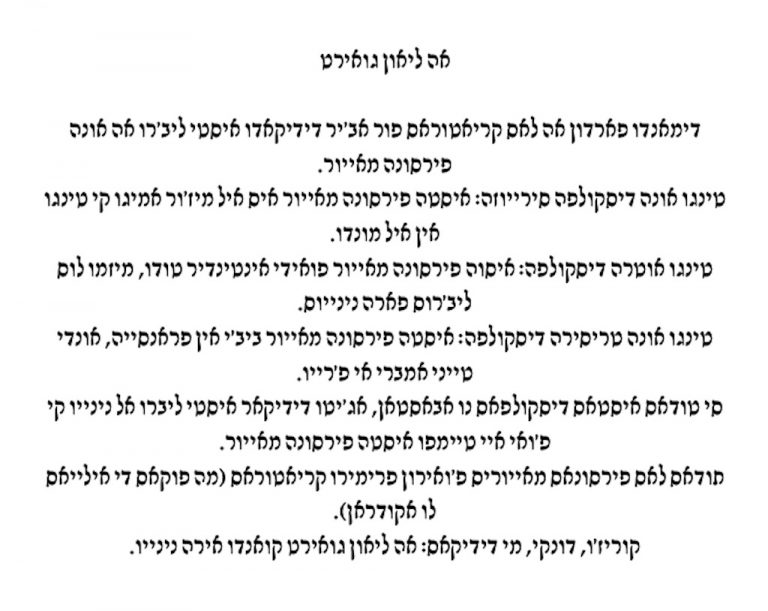Reader's Ladino
Practice Judaeo-Spanish through the Rashi Script Translation of The Little Prince


Get Started
Practicing written Judeo-Spanish can be challenging unless you have some resources lying around. The great majority of archival sources on the Sephardim and (even contemporary) publications in Judeo-Spanish are printed in the ketav Rashi, the Rashi Script. Understandably, students of the Talmud will be familiar with the Rashi script, while others may have never encountered it.
Indeed, genealogists’ cautionary tales about Judeo-Spanish in Rashi/Solitreo letters are not uncommon in the Sephardic forums. Regardless of whether you are interested in learning more about your family history or perusing Sephardic literature, it is advisable to practice reading some Rashi script beforehand. If you are a complete beginner, learn how to read the Rashi Script first.
Practice Through Literature
Below you will find excerpts from Avner Perez and Gladys Pimienta’s Judeo-Spanish translation of The Little Prince. The translated manuscript, titled El Princhipiko, has been around for almost 10 years and is available for purchase from the publisher. I picked Antoine de Saint-Exupéry’s foreword to The Little Prince because there is a chance you will come across similar writing styles amongst printed materials in Judeo-Spanish; and also because The Little Prince is almost in the Public Domain.
You Can Use the Slides Below to Study the Excerpt Sentences by Sentence:
The First Line is Judeo-Spanish (abbreviated as Ladino) in Rashi Script. The Second is the same Judeo-Spanish sentence Latinised. I also included the Modern Spanish translation for the sake of comparison and highlighted the differences in spelling and choice of vocabulary.

Try Breaking Down the Paragraph using the slides below:








Click on Dots or the Side-Facing Arrows to Navigate Between the Slides
Handwritten Sources
If you’ve studied Hebrew before, you will be familiar with the differences between block-letters used in print and their cursive equivalents used for penmanship. Similarly, Judeo-Spanish used a lettering style called Solitreo (alternatively spelled Soletreo) which has a very limited number of readers today. I, for one, heard several accounts of genealogical searches adjourned because of the language barrier.
Fortunately, in 2015, UW Professors Devin E. Naar and David M. Bunis did an all-encompassing interview on Solitreo. In addition, Prof. Bunis released a Solitreo tutorial which you can watch below:
Also See:
Rashi Script 101: Learn How to Read the Rashi Script and Use it on Your Computer
Deal with Dialects: How to Identify the Variegated Dialects of Ladino and create your own dictionary.
sources:
Saint-Exupéry, Antoine. El Princhipiko en Djudeo-Español (Tintenfaß: 2010).
^ [Trezladado del franzes al ladino por Avner Perez i Gladys Pimienta]
Helpful Links:
– Heading trailer credit.